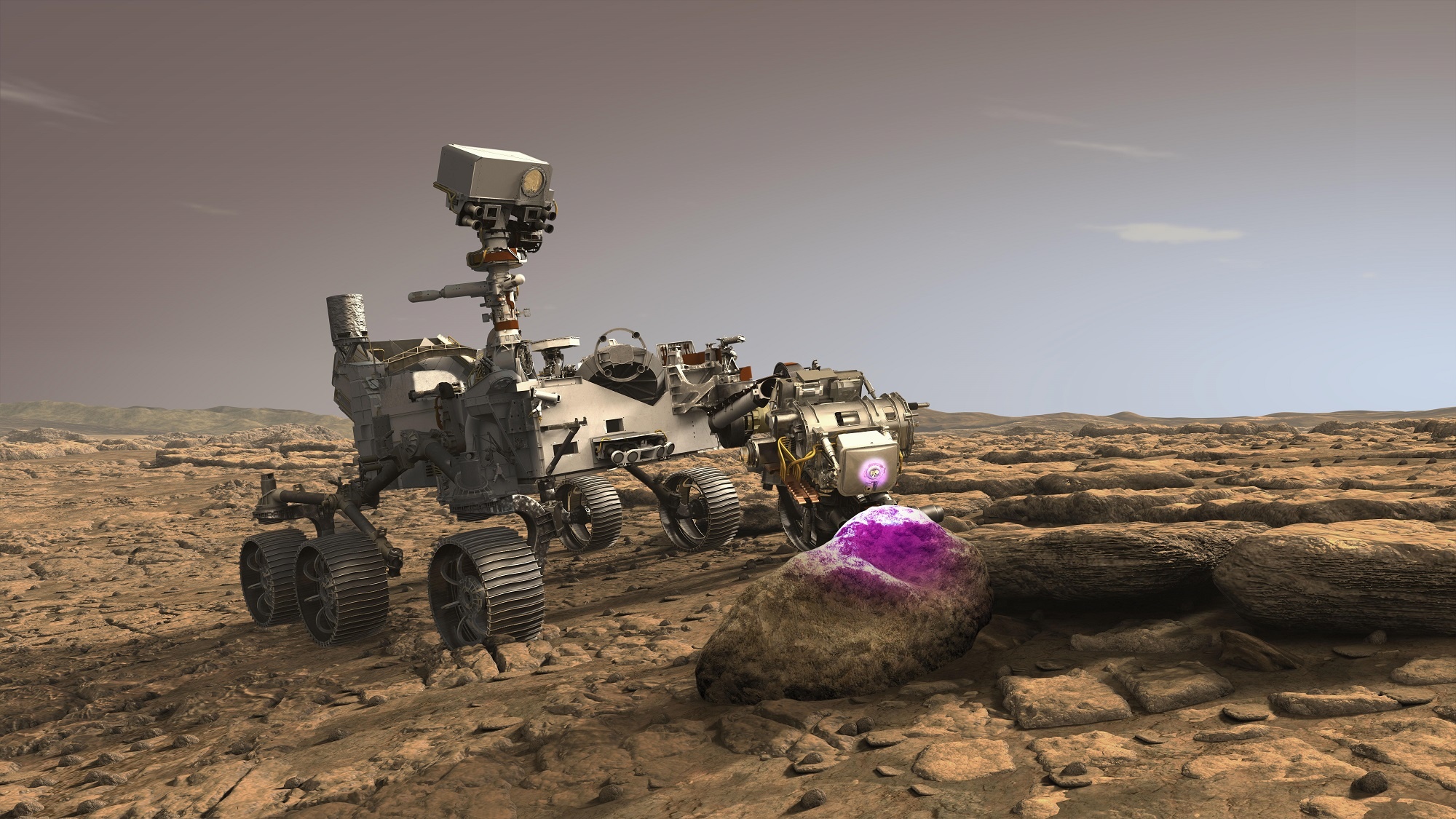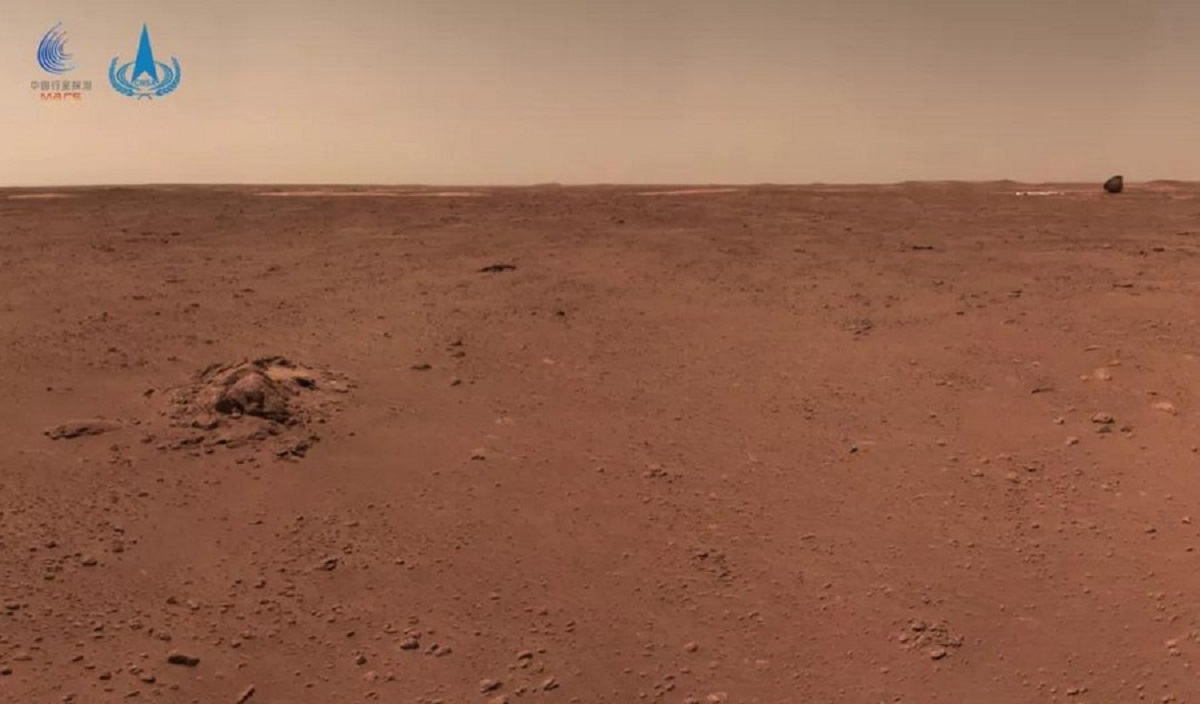Where’s Waldo (or Where’s Wally) is a very popular book series for all ages. One way to make it potentially more interesting is to adapt it to interplanetary exploration by searching for a Martian rover in a picture taken from a Martian helicopter. Ingenuity took a picture on its eleventh flight that would be a worthy addition to any interplanetary search game – in this image, the goal is to find Perseverance.
Continue reading “Ingenuity Sees Perseverance From Above”Can you Last a Year on Mars? NASA is Recruiting Crew for a Year-Long Analog Mission
Want to try living on Mars, but not sure you want to experience the nine-month flight time to get there? NASA is looking for applicants to serve as crew members for a one-year analog mission in a habitat to simulate life on the Red Planet, beginning in Fall 2022. All you have to do is get to Houston, Texas, and you’ll even get paid.
Continue reading “Can you Last a Year on Mars? NASA is Recruiting Crew for a Year-Long Analog Mission”Perseverance Fails to Collect its First Sample
Over the past few weeks, there was quite a bit of excitement in the air at the NASA Jet Propulsion Laboratory in Pasadena, California, where mission controllers were prepping the Perseverance rover to acquire its first sample from the Martian surface. This mission milestone would be the culmination of years of hard work by a team of over 90 dedicated scientists and engineers.
The commands to commence operations to take its first sample (from drill site Roubion) were sent to the rover on Sol 164 (Thurs, Aug. 5th). On the morning of Friday, Aug. 6th, the team gathered to witness the sampling data come in. Everything appeared to be fine until they were notified a few hours later that the sample tube was empty! Since then, the rover’s science and engineering teams have been investigating what could have become of the sample.
Continue reading “Perseverance Fails to Collect its First Sample”InSight has Mapped out the Interior of Mars, Revealing the Sizes of its Crust, Mantle, and Core
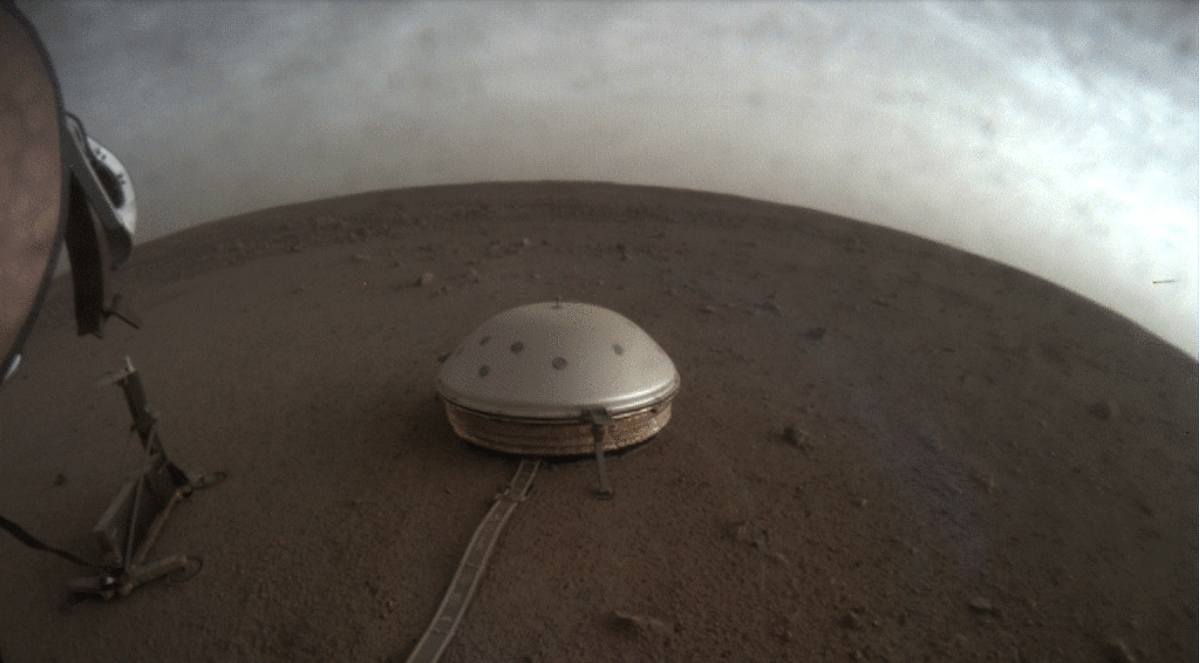
In May of 2018, NASA’s Interior Exploration using Seismic Investigations, Geodesy, and Heat Transport (InSight) landed on the Martian surface. This mission is the first of its kind, as all previous orbiters, landers, and rovers focused on studying the surface and atmosphere of Mars. In contrast, InSight was tasked with characterizing Mars’ interior structure and measuring the core, mantle, and crust by reading its seismic activity (aka. “marsquakes”).
The purpose of this is to learn more about the geological evolution of Mars since it formed 4.5 billion years ago, which will also provide insight into the formation of Earth. According to three recently published papers, the data obtained by InSight has led to new analyses on the depth and composition of Mars’ crust, mantle and confirmed the theory that the planet’s inner core is molten.
Continue reading “InSight has Mapped out the Interior of Mars, Revealing the Sizes of its Crust, Mantle, and Core”Bad News. Those Underground Lakes on Mars? They’re Probably Just Frozen Clay
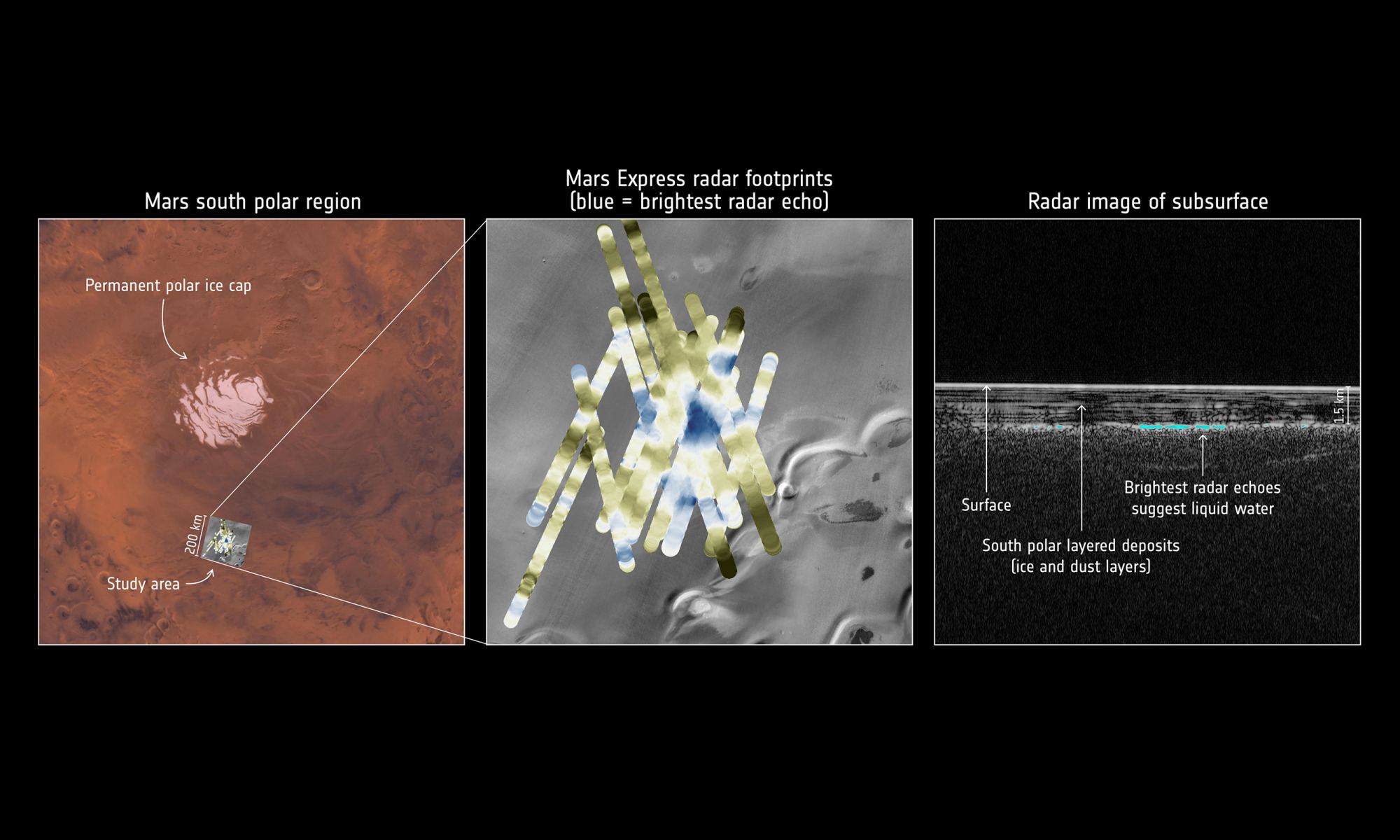
If you were planning an ice-fishing trip to the Martian south pole and its sub-surface lakes observed by radar in 2018, don’t pack your parka or ice auger just yet. In a research letter published earlier this month in Geophysical Research Letters by I.B. Smith et al., it seems that the Martian lakes may be nothing more smectite, that is, a kind of clay. Should the findings of the paper, titled A Solid Interpretation of Bright Radar Reflectors Under the Mars South Polar Ice (a solid title if you ask me), turn out to be correct, it would be a significant setback for those hoping to find life on the red planet. So why were these supposed lakes so critical for the search for life on Mars? How were they discovered in the first place? Why have our dreams of Martian ice-fishing turned to dust (or, more correctly, clay)?
Continue reading “Bad News. Those Underground Lakes on Mars? They’re Probably Just Frozen Clay”Strange Intersecting Sand Dunes on Mars
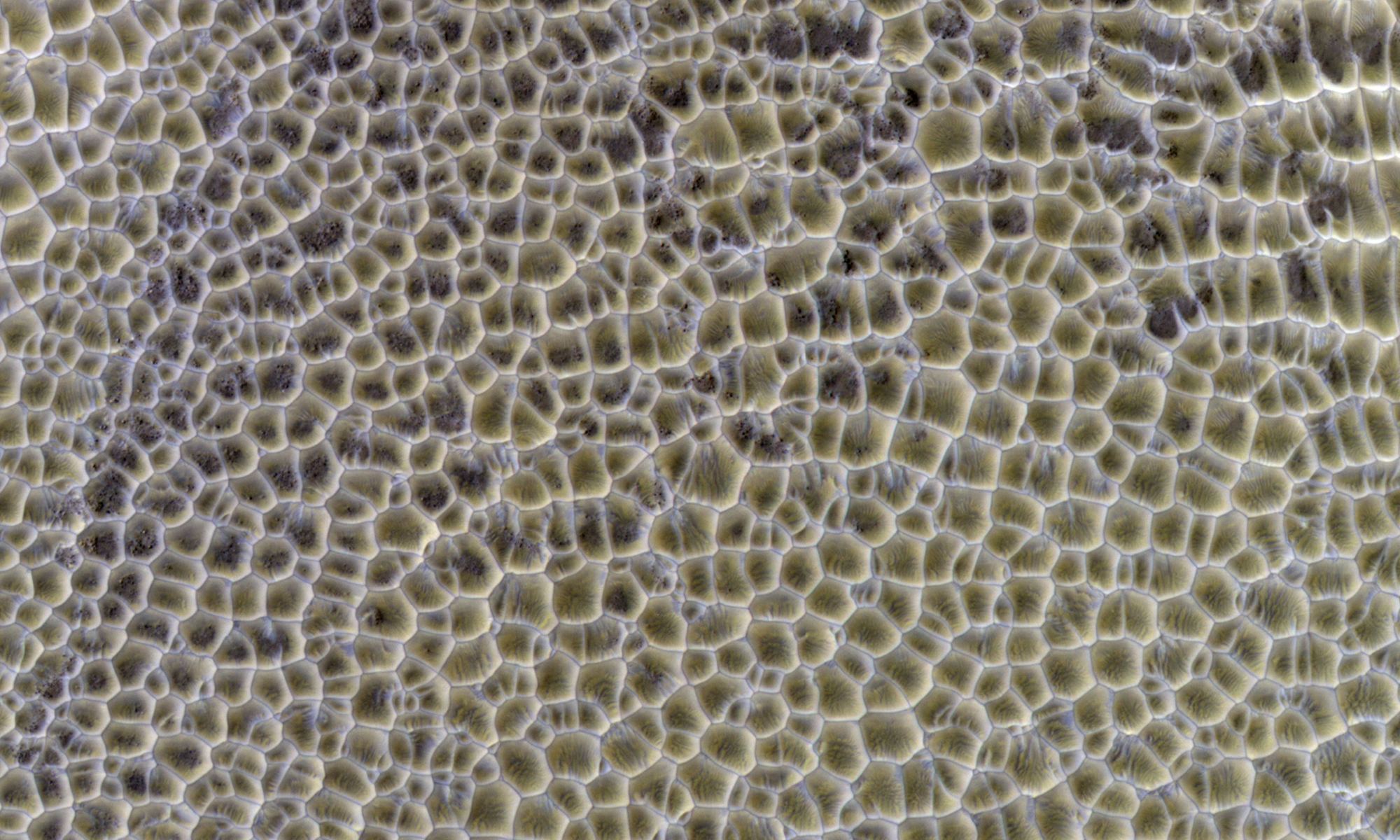
In our exploration of Mars, we’ve seen some strange but naturally occurring shapes. Polygons – a shape with at least three straight sides and angles, typically with five or more – have been seen in several different Martian landscapes, and scientists say these shapes are of great interest because they often indicate the presence of shallow ice, or that water formerly was present in these areas.
Continue reading “Strange Intersecting Sand Dunes on Mars”Perseverance is About to Collect the First Sample on Mars That Could Eventually be Returned to Earth
On Feb. 18th, 2021, NASA’s Perseverance rover landed within the Jezero Crater on Mars. Like its predecessor, Curiosity, a fellow member of NASA’s Mars Exploration Program (MEP), the goal of Perseverance is to seek out evidence of possible life on Mars (past and present). A key part of this mission will be the first sample return ever performed on Mars, where samples obtained by Perseverance will be placed in a cache for later retrieval and return to Earth.
For the past five months, mission controllers at NASA have been driving the rover further from where it landed (Octavia E. Butler Landing Site) and conducting test flights with the Ingenuity helicopter. NASA is now in the midst of making final preparations for Perseverance to collect its first sample of Martian rock. This historic first is expected to begin by the end of the month or by early August and will culminate with the return of the samples to Earth by 2031.
Continue reading “Perseverance is About to Collect the First Sample on Mars That Could Eventually be Returned to Earth”Zhurong Finds its Own Parachute on the Surface of Mars
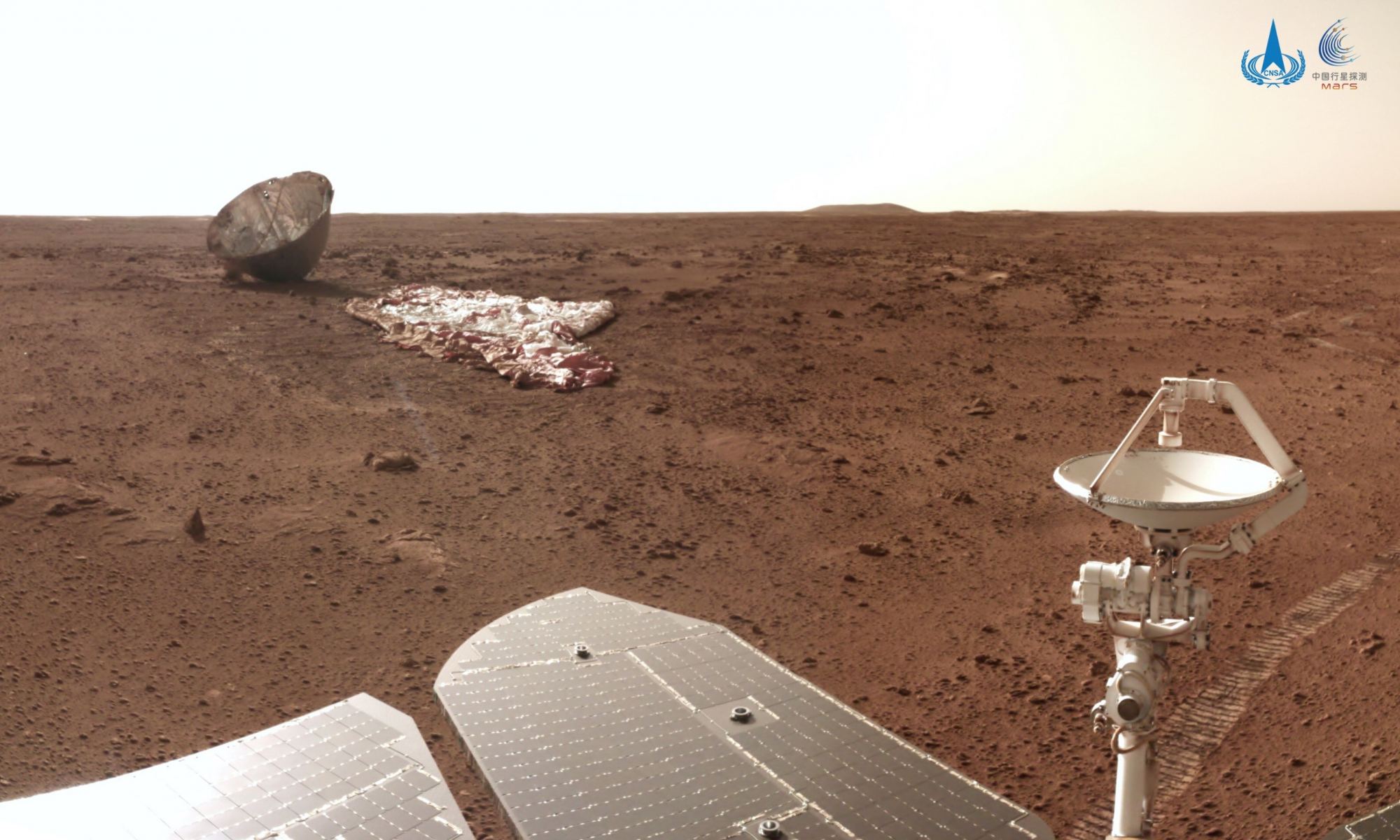
As of July 23, 2021, China’s Mars rover Zhurong has traveled 585 meters across the surface of Mars. And along the way, it’s taking pictures of interesting sights.
Some of the most intriguing recent images from the rover show debris from the rover’s landing. During its drives, the rover came upon the parachute and backshell. The China National Space Administration says as the rover drove south of its landing site, it first “saw” the debris on the horizon with its front obstacle avoidance camera, and then took a closer image (lead image) with its navigation terrain camera.
Continue reading “Zhurong Finds its Own Parachute on the Surface of Mars”New Images of Mars From China’s Rover
On May 14th, 2021, the China National Space Agency (CNSA) achieved another major milestone when the Tianwen-1 lander successfully soft-landed on Mars, making China the second nation in the world to land a mission on Mars and establish communications from the surface. Shortly thereafter, China National Space Agency (CNSA) shared the first images taken by the Tianwen-1 lander.
By May 22nd, 2021, the Zhurong rover descended from its lander and drove on the Martian surface for the first time. Since then, the rover has spent 63 Earth days conducting science operations on the surface of Mars and has traveled over 450 meters (1475 feet). On Friday, July 9th, and again on July 15th, the CNSA released new images of the Red Planet that were taken by the rover as it made its way across the surface.
Continue reading “New Images of Mars From China’s Rover”China Releases Sound and Video of its Rover Landing

Remember the stunning video of the Perseverance rover landing on Mars? The Chinese National Space Administration (CNSA) has now released similar video footage from its Zhurong rover, including the sounds recorded as it plummeted through the Martian atmosphere on its way to landing in Utopia Planitia. The CNSA also released sounds of the rover driving off the landing platform.
Continue reading “China Releases Sound and Video of its Rover Landing”


